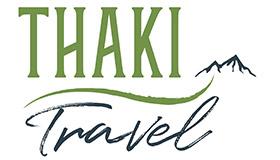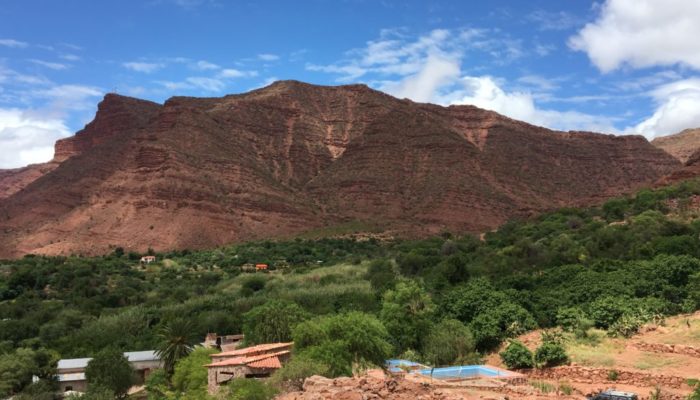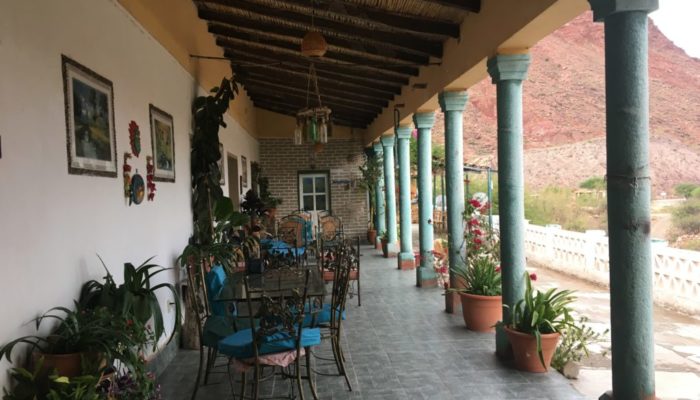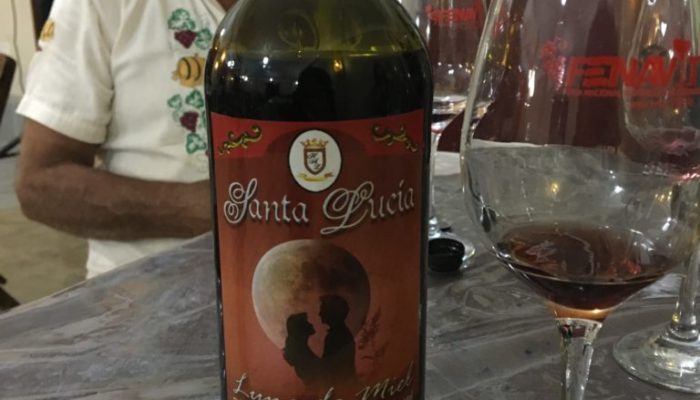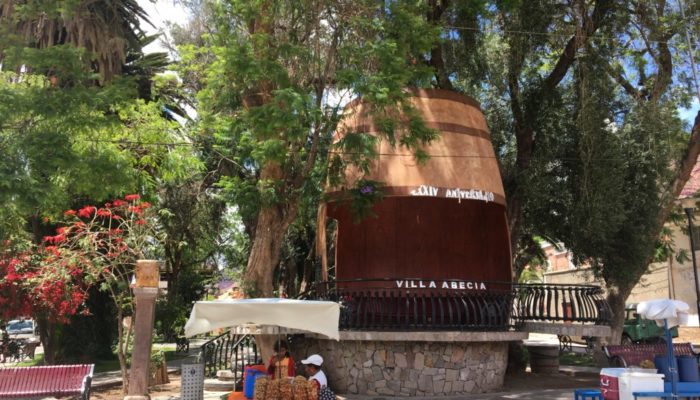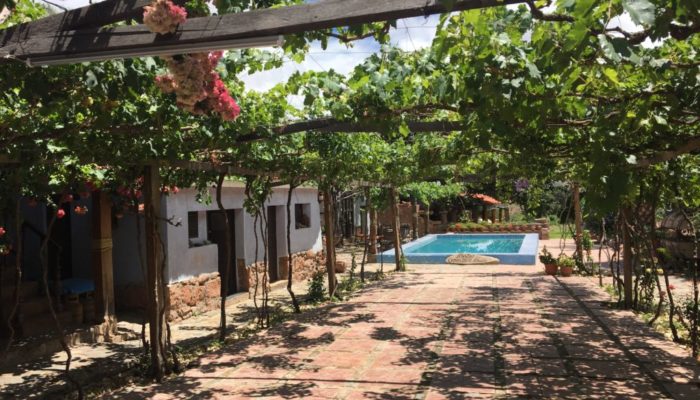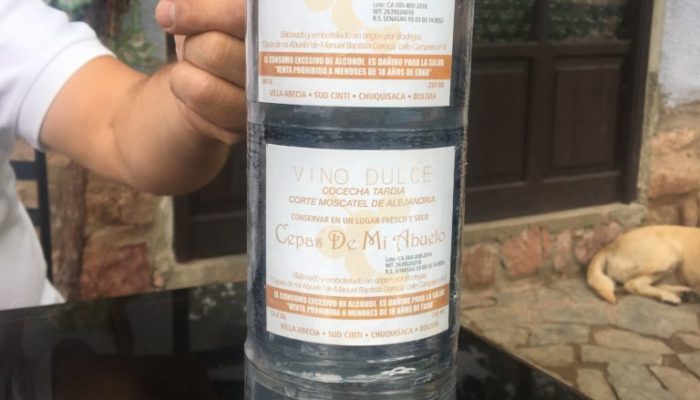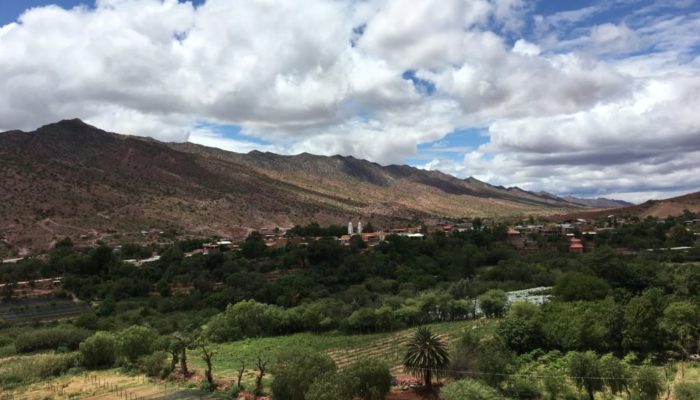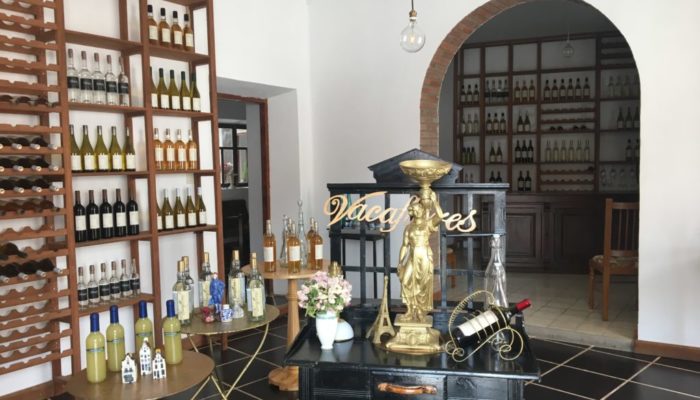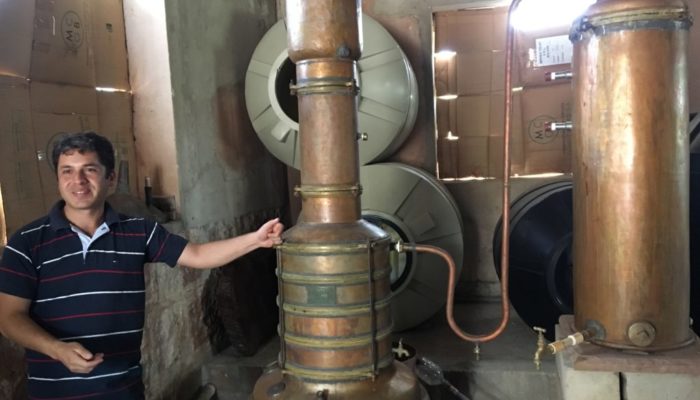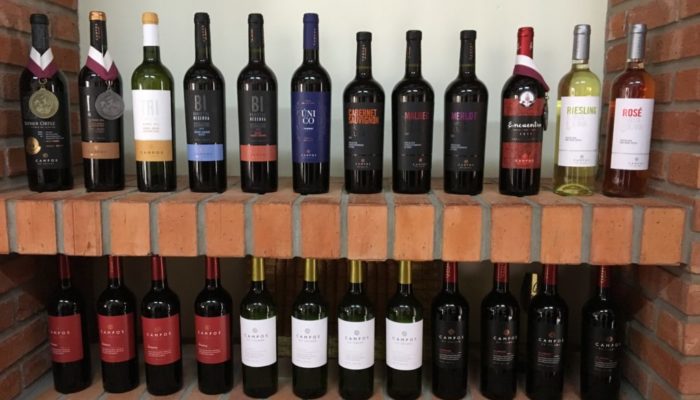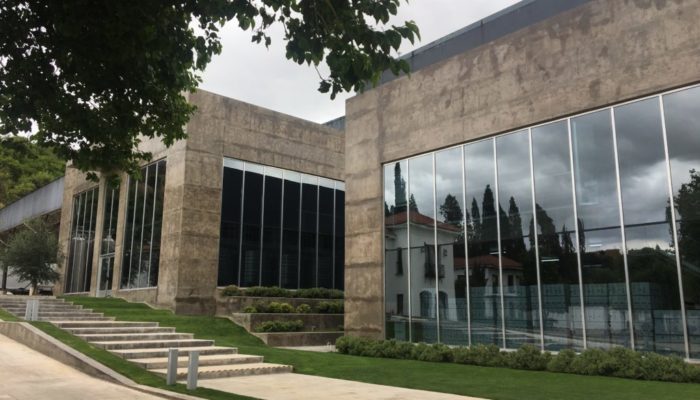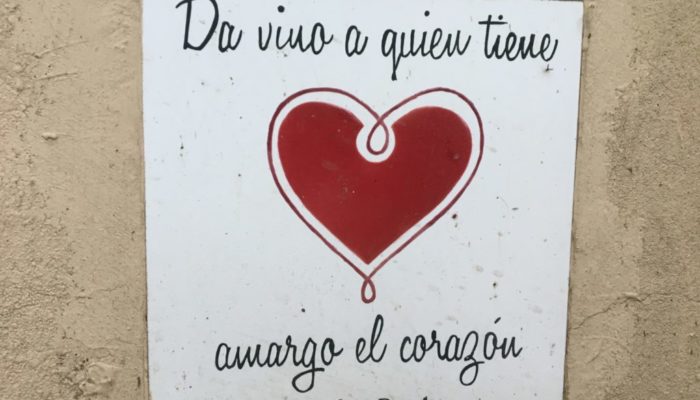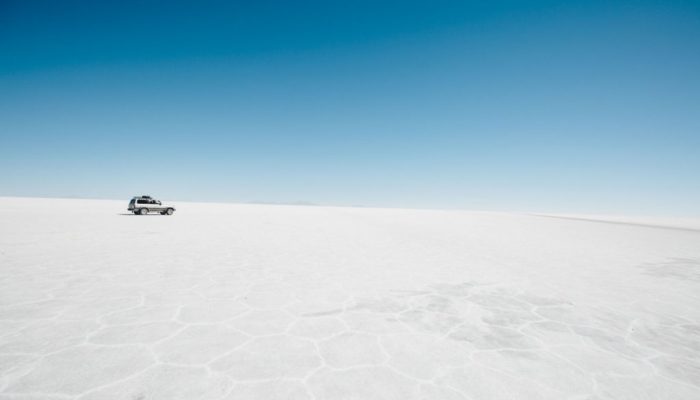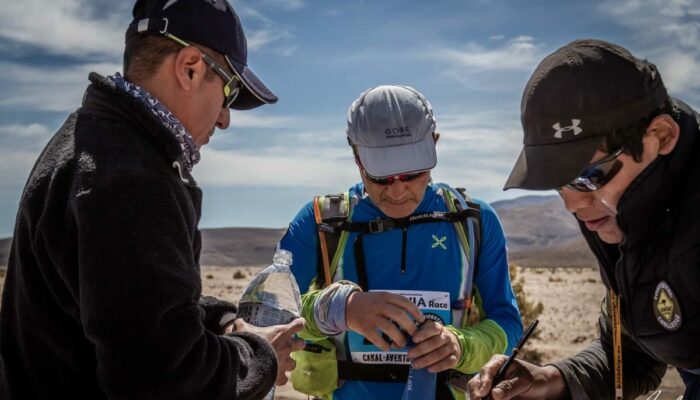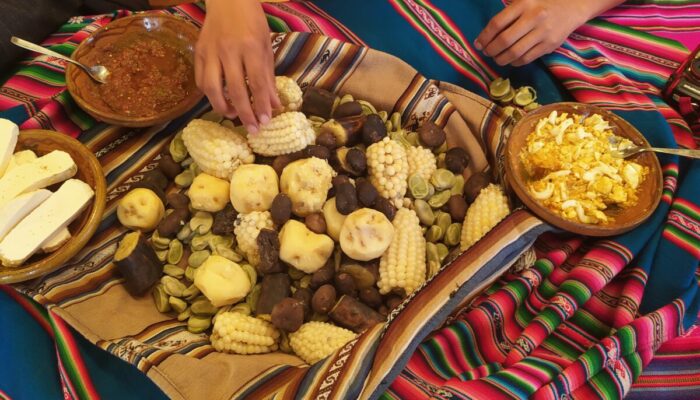Two years ago, Jérôme went to explore the Cintis Valley, the first wine-growing area of Bolivia, but infrastructures weren’t developed enough yet to welcome travelers. This year, we went back there, with a journalist from the Figaro, who requested our help to realize her report about oeno-tourism in Bolivia. We were surprised to see that the region is now ready to share the richness of its vineyards with the world.
Our expedition started at the airport of Sucre, where we met Pauline. After a lunch break in Potosi, where we experienced the Calapurca, a local specialty (a warm soup heated thanks to a volcanic stone), we drove towards Camargo where we are awaited to begin the bodega’s circuit. Here, we speak about real «vinos de altura» (altitude wines) cause we are located at a 2400m above sea level, in a microclimate with unique conditions : a temperate climate, dry and wealthy. Landscapes are splendid. Imagine a canyon of 80 km in length, along which a river is weaving, on the one side an incredible red, ocher mountain range, and on the other another range with darker tones … without forgetting the surrounding vegetation which comes to brighten up the panorama.
We begin with the oldest bodega in the valley, built in 1679, the bodega San Remo, owned by the Carmen Buitrago’s family, the first and unique sommelier in Bolivia. It is no functional anymore, but that’s the occasion to discover its creation history and see the originals oak barrels from the period. We visit the Hacienda Isuma as well, owned by the same family, a very peaceful place where we have the impression that time has stopped. The hacienda offers accommodation and grape bath as well.
Our contact guides us then to Don Hugo’s home, to visit his bodega Santa Lucia. A superb tourism complex is under construction with cabins and swimming pool, offering a really nice view on the neighboring valley and the vineyard underneath. We enjoy a homemade specialty, the «luna de miel» (honey moon), a sweet original wine.
After the visits, we head towards Villa Abecia, the second biggest city in the valley, at 40mn drive from Camargo, where we will sleep tonight.
The next day, we go on with the handmade bodegas visit of the Cintis Valley. We start with the bodega Cepas de mi abuelo, a bodega shop which offers a hostel at the same time. Manuel Daroca, the manager, gave us a tour and showed us his productions including an original bottle, combining 3 different varieties: a Ratafia liquor, wine and Singani. Former pilot, he told us how he converted into wine production and how he used his passion with a lot of «cariño». A really interesting person that has a lot of stories to tell.
Then Manuel takes us to his own vineyard, 10 mn away from his bodega, where we can admire a really nice view on the valley and Villa Abecia village, and from where we can hear the river flowing. A great mirador and a very peaceful moment.
Then, we join the very nice shop of the Vacaflores family, in Camargo, where Marcelo, 4rth generation, welcomes us warmly. He presents us his production range, wines, liquors and distilled, and makes us taste their specialties, 2 dry white wines, Muscat of Alexandria and Torrontes, and a Cabernet Sauvignon.
Marcelo takes us to their bodega San Francisco, the first you will find on your road out to Camargo, where we keep up with the Singani tasting this time. He explained to us the secret to have the best Singani, a perfect balance during the distillation for a better balance between taste and flavor. The bodega San Francisco is one of the Gustu’s suppliers, the prestigious restaurant from La Paz, among the TOP 50 best restaurants in South America.
Here, wine-growers want to keep their traditional production methods, unlike Tarija which modernizes itself much more. In total, we speak about 4000 hectares of vineyards in the country.
In the afternoon, we leave regretfully the beautiful Valley of Los Cintis to reach Tarija. Around three hours driving without getting bored admiring landscapes, and the Cordillera of Sama which shows up, while getting closer to the destination.
Three hours away from the frontier with Argentina, with 250 000 inhabitants, Tarija begins to be famous internationally, thanks to a 20% of tourism which attract foreigners and thanks to the export mostly to the United States and China.
The next day, we visit the main industrial bodegas of Tarija : Kohlberg, Campos de Solana (the most rewarded one in Bolivia), Casa Real and Aranjuez.
Varietal, bi-varietal, triple varietal, young wines, reserve and great reserve, whites, reds, rosés, Syrah, Cabernet Sauvignon, Malbec, Merlot, Uni-Blanc, Cabernet Franc, Riesling, Tannat …you will find for all tastes here in Tarija … without forgetting the national specialty, the Singani : an eau-de-vie, prepared from the distillation of the Alexandrian Muscatel.
We had the opportunity to visit the Aranjuez House thanks to a special demand for our journalist, because usually the bodega isn’t open to public. It is divided in 2 parts, an old one with colonial infrastructures built in 1976, and a new and much more modern one.
They explain to us the whole production process, and even have the honor to meet Mister Juan Cruz, the oldest employee, since 1982, who gave his name to the highest-end wine of the firm, awarded and gold medal-winning in Uruguay in 2014.
The team takes us then to the Finca, where we get the pleasure to observe the first Tannat crop ever planted in Bolivia, and the vineyard scale as well. The Tannat is the bodega’s specialty, arrived in Bolivia in the end of the 90’s.
It was a very rich moment spent in this impressive house where professionalism and quality prevail.
And they told us a really good news … they are thinking to open up their doors to the public by the end of the year.
The Bolivian wine didn’t finish to make itself known and the oeno-tourism is just in its early days !
To be continued …
